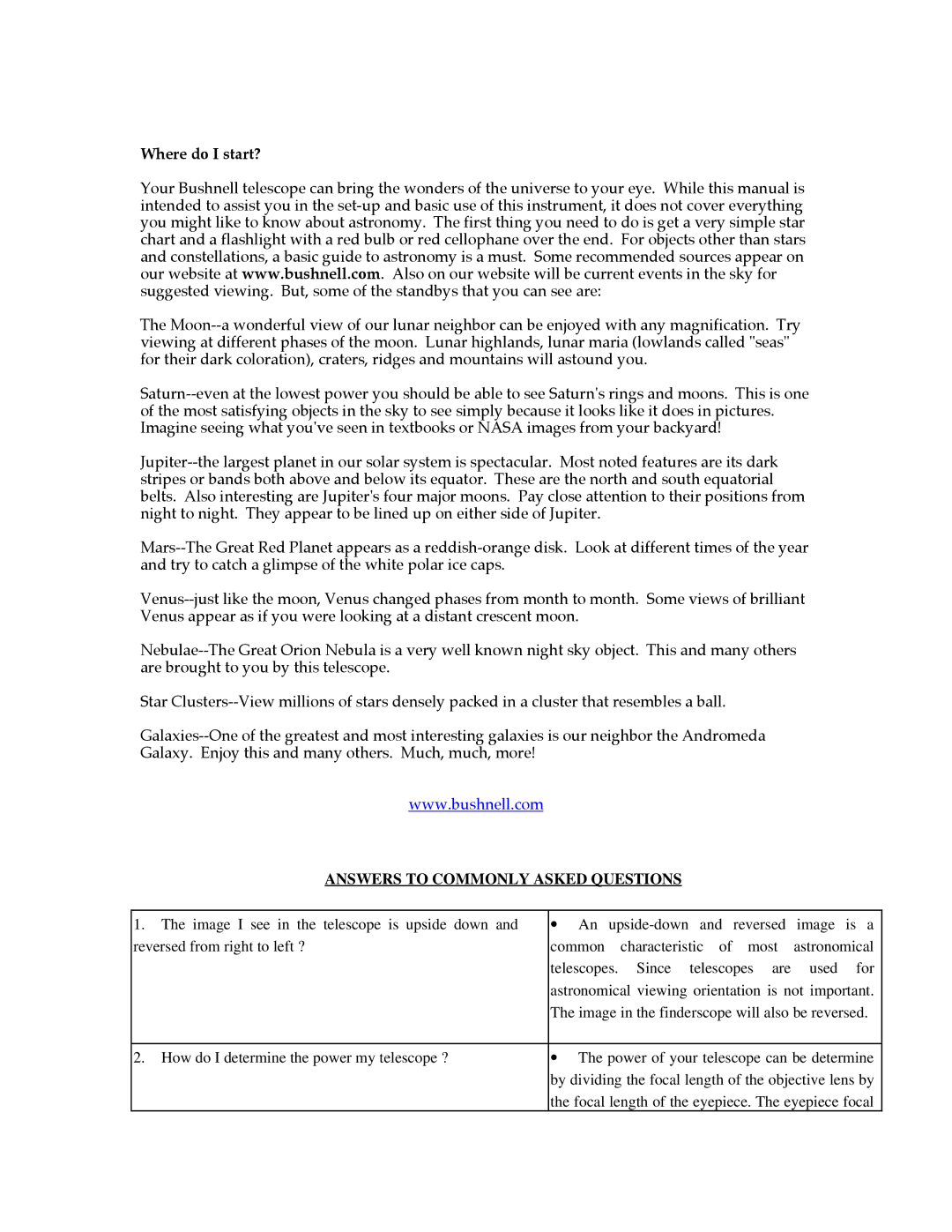Where do I start?
Your Bushnell telescope can bring the wonders of the universe to your eye. While this manual is intended to assist you in the set-up and basic use of this instrument, it does not cover everything you might like to know about astronomy. The first thing you need to do is get a very simple star chart and a flashlight with a red bulb or red cellophane over the end. For objects other than stars and constellations, a basic guide to astronomy is a must. Some recommended sources appear on our website at www.bushnell.com. Also on our website will be current events in the sky for suggested viewing. But, some of the standbys that you can see are:
The Moon--a wonderful view of our lunar neighbor can be enjoyed with any magnification. Try viewing at different phases of the moon. Lunar highlands, lunar maria (lowlands called "seas" for their dark coloration), craters, ridges and mountains will astound you.
Saturn--even at the lowest power you should be able to see Saturn's rings and moons. This is one of the most satisfying objects in the sky to see simply because it looks like it does in pictures. Imagine seeing what you've seen in textbooks or NASA images from your backyard!
Jupiter--the largest planet in our solar system is spectacular. Most noted features are its dark stripes or bands both above and below its equator. These are the north and south equatorial belts. Also interesting are Jupiter's four major moons. Pay close attention to their positions from night to night. They appear to be lined up on either side of Jupiter.
Mars--The Great Red Planet appears as a reddish-orange disk. Look at different times of the year and try to catch a glimpse of the white polar ice caps.
Venus--just like the moon, Venus changed phases from month to month. Some views of brilliant Venus appear as if you were looking at a distant crescent moon.
Nebulae--The Great Orion Nebula is a very well known night sky object. This and many others are brought to you by this telescope.
Star Clusters--View millions of stars densely packed in a cluster that resembles a ball.
Galaxies--One of the greatest and most interesting galaxies is our neighbor the Andromeda Galaxy. Enjoy this and many others. Much, much, more!
www.bushnell.com
ANSWERS TO COMMONLY ASKED QUESTIONS
1. | The image I see in the telescope is upside down and | ∙ An upside-down and reversed image is a |
reversed from right to left ? | common characteristic of most astronomical |
| | telescopes. Since telescopes are used for |
| | astronomical viewing orientation is not important. |
| | The image in the finderscope will also be reversed. |
| | |
2. | How do I determine the power my telescope ? | ∙ The power of your telescope can be determine |
| | by dividing the focal length of the objective lens by |
| | the focal length of the eyepiece. The eyepiece focal |
